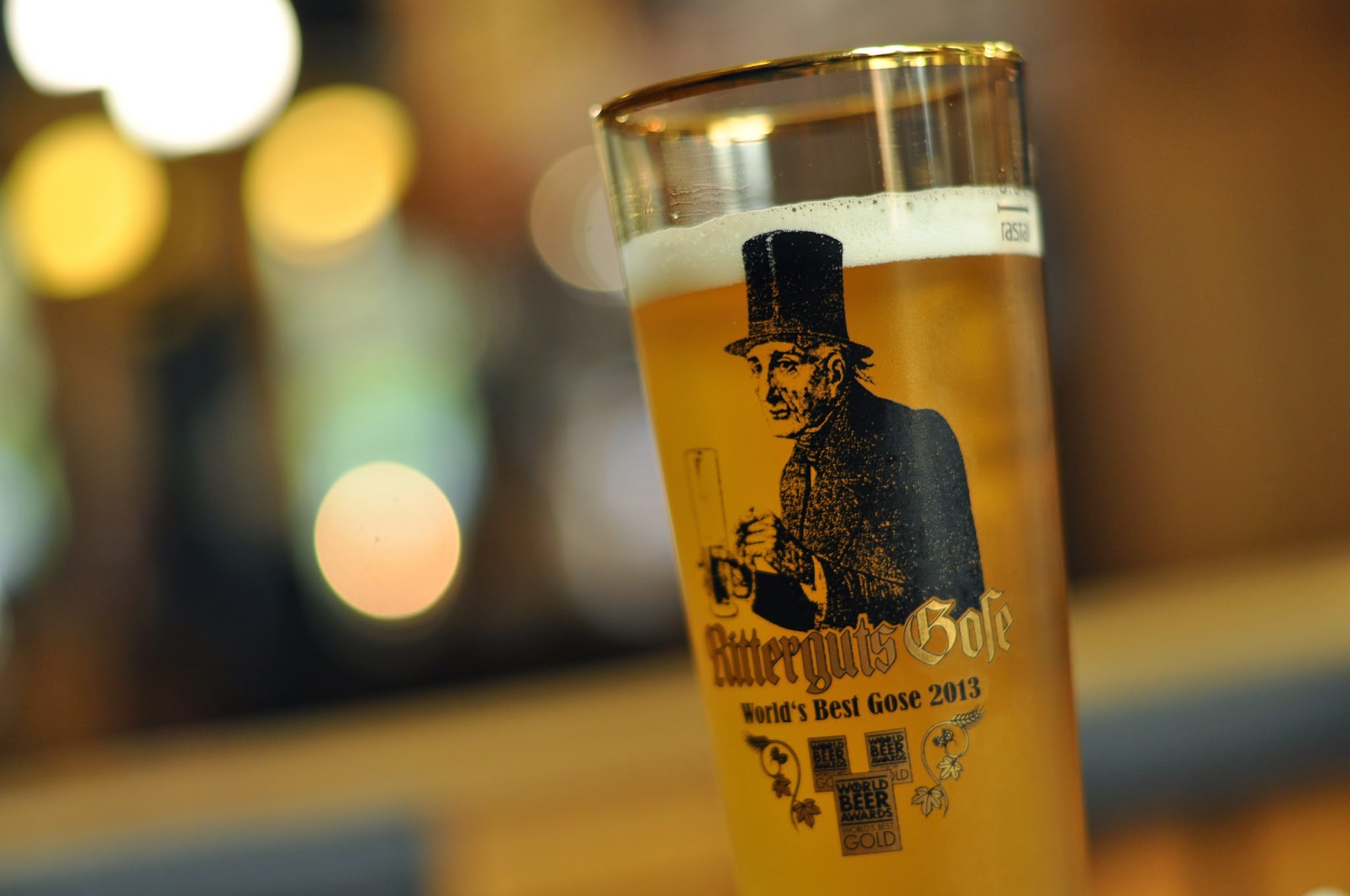Postmodern drinking is surreal at times. We drink these funny things disconnected from their moorings. We try to get to know them without having been to their homes. They have neither had us over for dinner nor showed us around town. We have not met the family. But we think we know them.
Hundreds of American breweries have discovered gose—maybe your local micro is one of them. If not: Gose (say it: GO-zuh) is an old-fashioned, acidic wheat beer, typically orange and hazy, that gets subtle doses of salt and coriander.
It starts innocently, with a few American brewers looking to add variety to the menu, to offer you something new, or even to offer themselves something new; some brewers make obscure styles just to find out what they taste like.
Then, it turns out, people drink more than one. So a toy becomes a trend.
My theory about gose: It is a self-contained cycle of quench. We’re all familiar with the old bar trick of offering salty snacks so we drink more. Gose typically starts with a tangy, orangeade-like acidity, rolling through bready flavor and lively bubbles, fading into that light—it must be subtle—lingering salty note. You know what tastes really good then? Another gulp of that acidity.
Gose is the song that never ends. It’s weird.
It gets weirder: One day, I actually visit Leipzig, Germany. And I get the strong impression that not even Leipzig has discovered gose. Not really, not recently.
There are basically two places in Leipzig known for serving gose, and neither is in the old town center. One is about 25 minutes walk north of the main train station; the other is about 25 minutes south. The trip is faster if you skip the exercise and work out the transit.
Arriving at Leipzig station on a crisp fall day, I get curious, visit the station bar, and ask if they have gose. I know the answer, but I want to hear it.
“No,” says the barman, shaking his head dismissively. “It doesn’t sell.”
Then, as if on automatic, he tells me the two places in town known for gose. This is a practiced ritual, for the tourists who ask. I resist the temptation to tell him that there were, supposedly, about 80 gose pubs in Leipzig a century ago.
Now, there are basically two.
The one in the south is the Bayerischer Bahnhof, named for the train station and located in an immaculate neoclassical structure with an immaculate showpiece brew kit. It’s a sprawling brewpub that appears to get a healthy mix of locals and tourists, most of them—the day I visited—choosing the Leipziger Gose. It’s an easy beer to like: mildly tart, offering a distinct impression of orange juice and zest and only faint whispers of spice and salt.
I’d like to talk with the brewer about it, but he is in San Diego, visiting breweries there. Drinking IPAs, no doubt. Postmodernity strikes again.
Incidentally, Leipziger Gose is available in the U.S., imported by B. United. Ask your bottle shop or beer bar.
The Bahnhof is highly tourist- and family-friendly, with full-color menus, crayons for the kids—the works. It can feed you a jellied pork-knuckle, but it might not satisfy your jones for an old-fashioned boozer.
For that, head to the pub in the north. The famous Gosenschenke Ohne Bedenken—it means “without hesitation”—is the main outlet for Ritterguts Gose. The pub has a pleasant beer garden if weather allows, while the interior is all wood and warmth, accented by dusty model ships, stained glass and candlelight.
The acidity in the hazy, orange-amber Ritterguts is more noticeable, arguably more addictive, while the salt and spice remain relatively subtle. Its striking label features what appears to be a stovepipe-hatted Mr. Burns—Herr Ritterguts, we presume? This one is also available in America, imported by Shelton Brothers.
It may well be that Germany will rediscover its gose, and its zwickl, its zoigl, its Berliner weisse, in the same way that Belgium rediscovered its lambic and its saison.
But for now, we lament the lack of other goses to try in Leipzig, and other characterful pubs in which to try them. It is time to walk back to the center and perhaps take in a Bach concert, or drink a pils in the Auerbachs Keller, where Goethe drank, and where Faust rode out on a wine barrel.
And near there you may see an interesting thing.
In the window of a gourmet shop at Mädler passage, there are bottles of Ritterguts Gose on display—alongside high-priced Italian pale ales and German imperial stouts.
Strange times, these.











